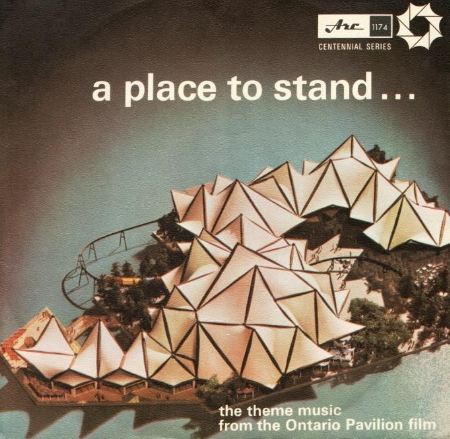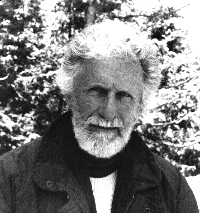A Place To Stand
The brilliant documentary film A
Place to Stand was produced and directed by Christopher Chapman
for the Ontario Pavilion at Expo 67 in Montreal. The film
premiered on April 28, 1967 in a 70mm print by Technicolor, on a
screen 66 feet wide by 30 feet high, with six-channel stereo
surround sound. Using images, music and sound effects without
spoken narration or titles, the film tells about life in Ontario,
presenting about an hour-and-a-half of footage in its 18-minute
running time. This is accomplished by what Chapman calls his
multi-dynamic image technique, a groundbreaking multiple screen,
variable picture presentation that allows viewers to see many
images within different panels, up to 15 scenes simultaneously on
one screen.
The music in A Place to Stand
was an integral part of the storytelling process and proved
extremely popular with audiences. An article about the film in
the August, 1967 issue of American Cinematographer explained
that music for the stereo soundtrack was composed from March 1 to
March 16 (1967), "…a demonstration piece having been previously
recorded." On March 18, approximately six weeks before the
film premiered, "…the recording session was held in Toronto with a
45-piece orchestra and a chorus of 15 voices." Chapman worked
closely with the musical directors to score the variety of moods,
action and nuances within each film
segment.

|
The theme to A Place to Stand was
issued on two different labels, Arc (as part of the
Centennial series) and RCA Victor, the latter with a
slightly different lyrical version. The enormously popular
song was composed by Dolores Claman, with lyrics by Richard
Morris. French lyrics heard in the film, but not
included on the records, were written by Larry Trudel.
|
A description of the film published in late 1967 by Ontario's
Department of Economics and Development stated "A Place to
Stand took two years to film, edit and process at a cost of half
a million dollars. Almost 40 miles of film were shot to
produce the most comprehensive view ever recorded of Ontario's
landscape, industry and people."
"At Expo, A Place to Stand was
an instant hit. It played continually before packed audiences;
as many as 6000 people daily, 2 million in total," until the end of
the six-month long exposition on October 27. "The title song
from the film became so popular a record was produced and has sold
over 50,000 copies to date. Since Expo, A Place to
Stand has been distributed to movie houses throughout Ontario
and Canada and is soon to tour theatres in the U.S.A. and
Europe. It is expected that over 100 million people will see
the film."
Nearly every major Hollywood studio
purchased prints of Chapman's film to screen for executives,
producers and directors. Columbia Pictures distributed the
film to movie theatres throughout the United States and
Canada. A Place to Stand clearly influenced the
composition of subsequent film images. An early prominent
example of this influence was Norman Jewison's 1968 film The
Thomas Crown Affair, which featured Chapman's multi-dynamic
image process in key scenes of the story. Jewison publicly
acknowledged Chapman as creator of the
technique.
Christopher Chapman's A Place
to Stand was nominated in two categories for an Academy Award,
including Best Documentary Short Subject. The film won in
the Best Live Action Short Subject category and Chapman accepted the
Oscar on April 10, 1968, during the 40th annual Academy Awards presentation at the
Santa Monica Civic Auditorium.
-- George
C. Konder
December 6, 2004

 |
Oscar award winning film
producer and director Christopher Chapman was appointed
the
Order of Canada on
December 21, 1987. His investiture took
place on May 7, 1988.
|
| For a
larger view of Christopher, click here. |
Acknowledgement: The Expo 67 in Montréal web site
wishes to give a very special thank you to George C. Konder for
allowing us to publish his wonderful article. Copyright 2004
by George C. Konder. All rights
reserved.
Carleton University's "National
Capital Freenet" is a non-commercial ISP located in Ottawa, Canada. The
information contained on this page are for educational and historical purposes
only.

|

